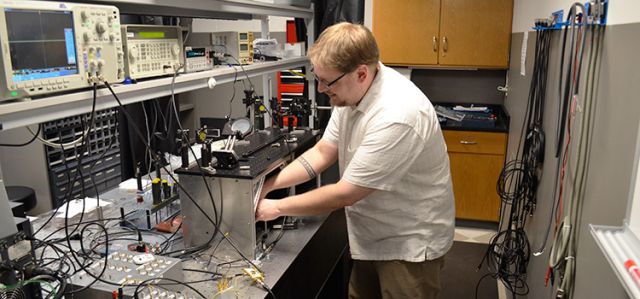Document Type
Article
Publication Date
11-13-2017
Publication Source
Optics Express
Abstract
A laser beam propagation model that accounts for the joint effect of atmospheric turbulence and refractivity is introduced and evaluated through numerical simulations. In the numerical analysis of laser beam propagation, refractive index inhomogeneities along the atmospheric propagation path were represented by a combination of the turbulence-induced random fluctuations described in the framework of classical Kolmogorov turbulence theory and large-scale refractive index variations caused by the presence of an inverse temperature layer. The results demonstrate that an inverse temperature layer located in the vicinity of a laser beam’s propagation path may strongly impact the laser beam statistical characteristics including the beam wander and long-exposure beam footprint, and be a reason for refractivity-induced spatial anisotropy of these characteristics.
Inclusive pages
28524–28535
ISBN/ISSN
1094-4087
Document Version
Published Version
Copyright
Copyright © 2017, Optical Society of America
Publisher
Optical Society of America
Volume
25
Issue
23
Place of Publication
Washington, DC
Peer Reviewed
yes
eCommons Citation
Kulikov, Victor A. and Vorontsov, Mikhail, "Analysis of the Joint Impact of Atmospheric Turbulence and Refractivity on Laser Beam Propagation" (2017). Electro-Optics and Photonics Faculty Publications. 78.
https://ecommons.udayton.edu/eop_fac_pub/78




Comments
© 2017 Optical Society of America. Users may use, reuse, and build upon the article, or use the article for text or data mining, so long as such uses are for non-commercial purposes and appropriate attribution is maintained. All other rights are reserved.
Permission documentation on file.